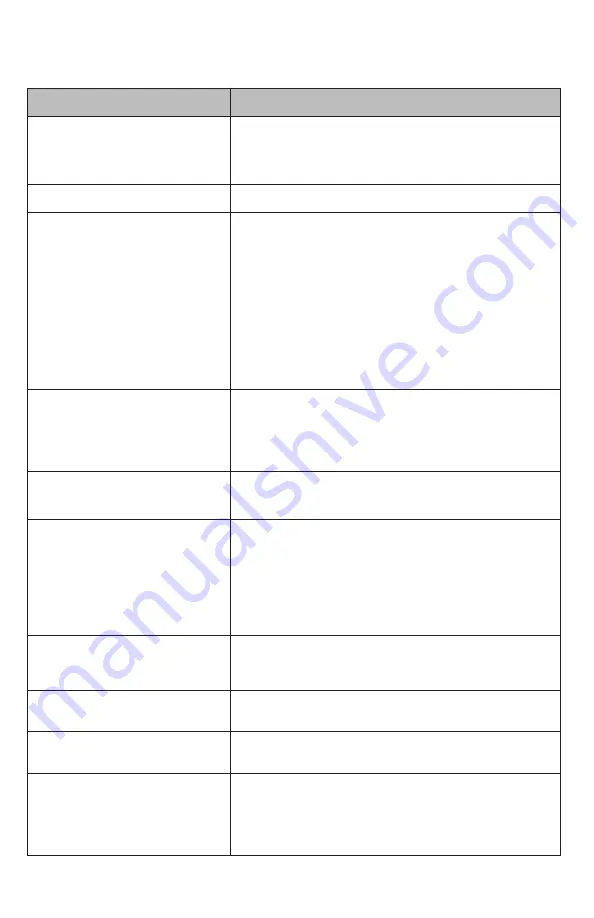
- 10 -
TROUBLESHOOTING
Problem
Recommended Adjustment
Refrigerator doesn’t work.
• Check for power failure.
• Verify unit is plugged into power outlet.
• Check home fuse box to determine if a fuse has blown.
Refrigerator is too cold.
• Adjust thermostat to lower number.
Refrigerator is not cooling
sufficiently.
• Adjust thermostat to higher number.
• Ensure door is closed properly.
• Door gaskets may be damaged.
• Refrigerator may not have enough ventilation space
around it.
• Refrigerator in a hot area or in sunlight.
• Something hot may have been placed in the refrigerator.
• Too much food in the refrigerator may block circulation of
cool air.
Refrigerator compressor runs for
long periods.
• Hot weather and/or frequent door opening will force the
refrigerator to work harder to keep cool.
• Do not overload the refrigerator or chiller.
• Do not put hot foods in the refrigerator.
Refrigerator door does not close
properly.
• Refrigerator door or chiller may be overloaded.
• Refrigerator may be tilted – adjust front legs to level unit.
Side panel of refrigerator is hot.
• The refrigerator has a pipe that heats up to remove
condensation. Does not indicate a malfunction.
• Usually happens when door is opened and closed
frequently, or when operated in high temperature
weather. Results from dissipation of heat from within
the unit. Do not touch the panel. Does not indicate a
malfunction.
Condensation forms along the seals
or on the outside of the refrigerator.
• Condensation forms under situations of high humidity;
does not indicate a failure. Wipe condensation with dry
towel.
Sound of trickling water.
• This is the refrigerant flowing. Does not indicate a
malfunction.
Buzzing sound.
• A buzzing noise is typically generated by the compressor
when starting up or shutting down.
Odor.
• Check food for spoilage.
• Foods with strong odors should be wrapped or
contained carefully.
• Unit may require cleaning.

































